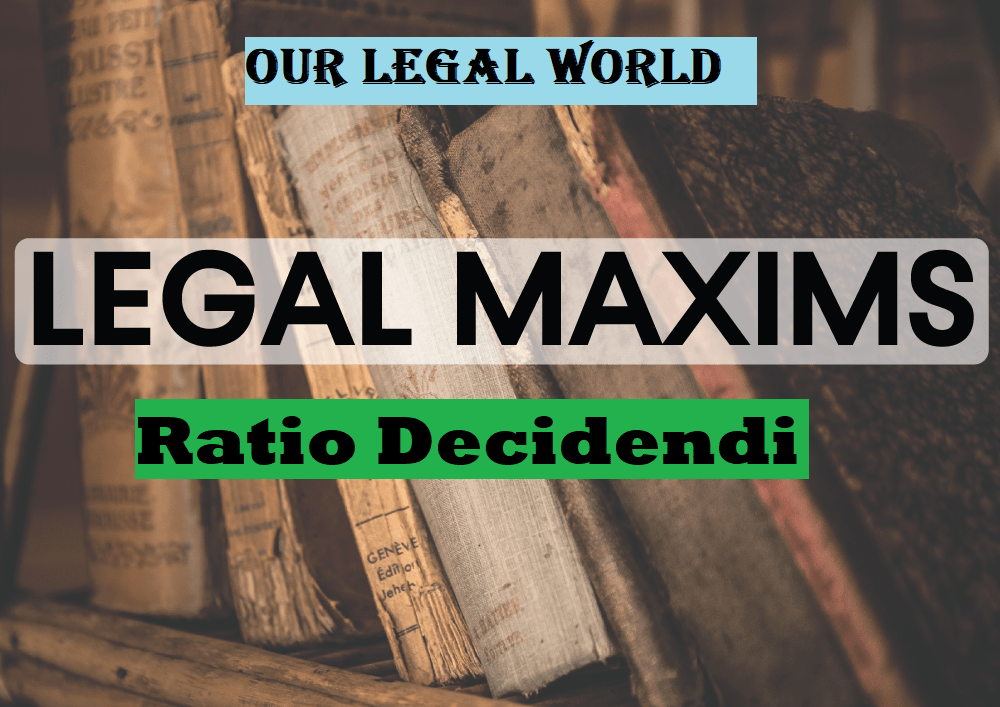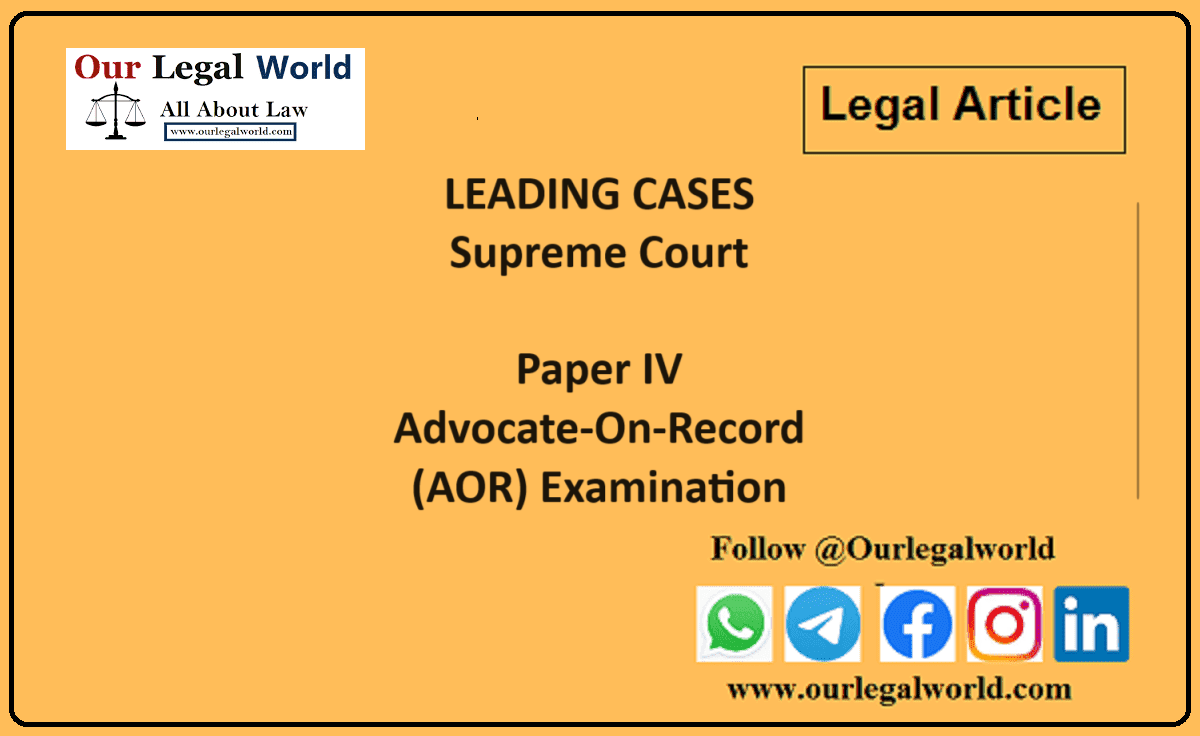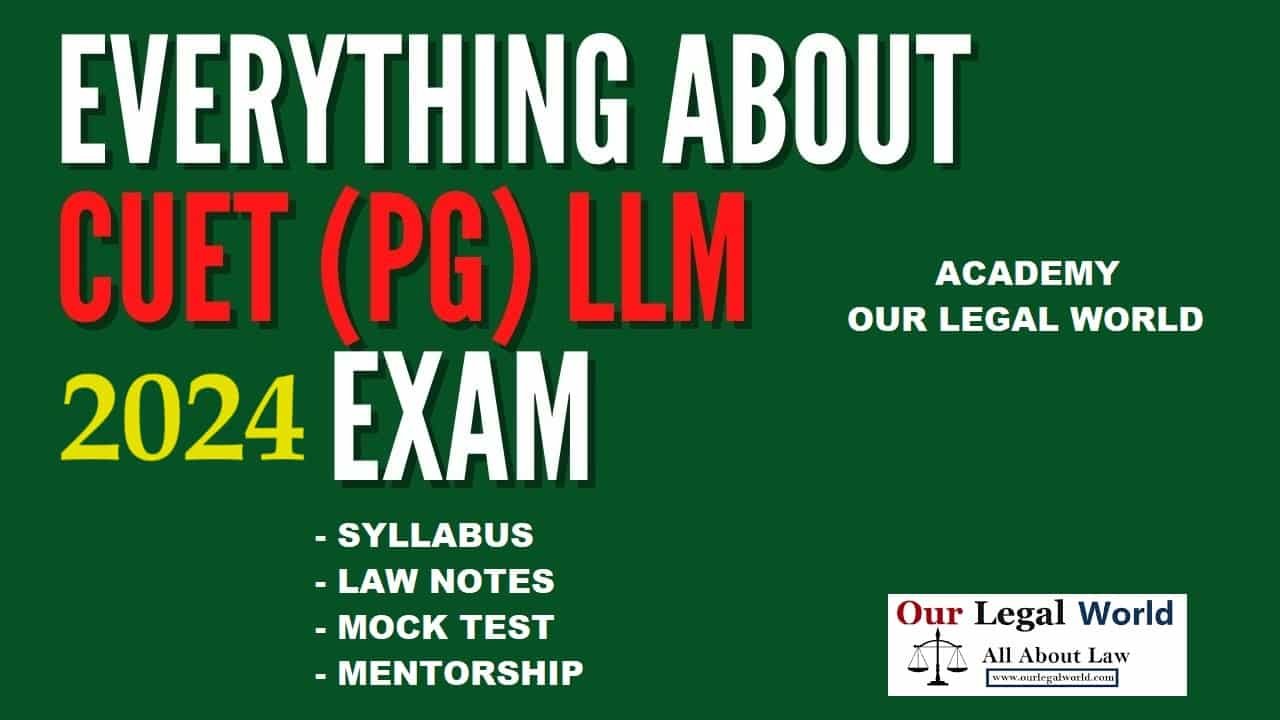Ratio Decidendi
According to Article 141 of the Constitution of India, the law declared by the Supreme Court shall be binding on all courts within the territory of India. It is not like that the whole judgment is binding but the ratio decedendi of the judgment, which constitutes a binding precedent. Ratio decidendi is a term used in contrast to obiter dictum which is not necessarily binding in law.
The meaning of the maxim
The Latin maxim literally means ‘ the reason for decision’. The principle or rule of law on which a court’s decision is founded.[i]. The rule of law on which a later court thinks that a previous court founded its decision; a general rule without which a case would have been decided otherwise. [ii]
The phrase ‘the ratio decedendi of a case’ is slightly ambiguous. It may mean either 1) the rule that the judge who decided the case intended to lay down and apply to the facts, or 2) the rule that a later court concedes him to have had the power to lay down.[iii]
A decision is binding on the basis of ratio decidendi. When no ratio has been formulated in a decision has no binding effect. [iv]
In the words of H. L. A. Hart, Ratio decidendi roughly denotes the rule of law applied by and acted on by the court, or the rule which the court regards as governing the case.[v] It is the formation of the applicable rule in the case so far as it is necessary to the matter which is being decided.
Mohamd Ayub v. Commissioner of Police,[vi]
The Maxim has been discussed in detail by S Nainar Sundaram C.J., in the judgement of Mohamd Ayub v. Commissioner of Police,
The facts of ratio decidendi have been summarised by Dias,[vii] in the following terms : “… What is “law” in a precedent is its ruling or ratio decidendi and this concerns future litigants as well as those involved in the immediate dispute. Statements which are not part of the ratio decidendi are distinguished as obiter dicta and are not authoritative. Three shades of meaning can be attached to the expression “ratio decidendi“. The first, which is the translation of it, is “the reason for (or of) deciding”. Even a finding of fact may in this sense be the ratio decidendi. Thus, a Judge may state a rule and then decide that the facts do not fall within it. Secondly, it may mean “the rule of law proffered by the Judge as the basis of his decision”, or, thirdly, it may mean “the rule of law which others regard as being of binding authority.”
Salmond on Jurisprudence,[viii] spoke as to how far a ratio decidendi in a pronouncement is conclusive as follows : “…… As against persons not parties to the suit, the only part of a case which is conclusive (with the exception of cases relating to status) is the general rule of law for which it is authority. This rule or proposition, the ratio decidendi, may be described roughly as the rule of law applied by and acted on by the Court, or the rule which the Court regarded as governing the case…
“… The ’reversal’ test of Professor Wambaugh suggested that we should take the proposition of law put forward by the Judge, reverse or negate it, and then see if its reversal would have altered the actual decision. If so, then the proposition is the ratio or part of it; if the reversal would have made no difference, it is not. In other words the ratio is a general rule without which the case would have been decided otherwise…”[ix]
Salmond on Jurisprudence, [x]“… Another test is that suggested by Dr. Goodhart. According to this the ratio is to be determined by ascertaining the facts treated as material by the Judge together with his decision on those facts. This test directs us away from what Judges say towards what in fact they do, and indeed it is the only way of deriving a ratio in cases where no judgment is given. Where a judgment is given, however, it is from this that we must discover which facts the Judge deemed material and which not…” The eminent author Salmond noticed a shortcoming in the test formulated by Dr. Goodhart as follows : “… The only shortcoming of Goodhart’s test is that while it provides a very useful method of ascertaining the ratio decidendi of a ease, this does not appear to be quite the same method as that in current use in practice. For in practice the Courts seem to pay more attention to the Judge’s own formulation of the rule of law than Dr. Goodhart’s test would allow; the Courts look at this, it seems, not just to discover the material facts but to discover the rule which the Judge thought himself to be applying. On the other hand it is true that any such rule must be evaluated in the light of the facts considered by the Court to be material……”
In Halsbury’s Laws of England, Fourth Edition, while dealing with ratio decidendi and its binding nature, the terse observations run as : “…The enunciation of the reason or principle upon which a question before a Court has been decided is alone bindmg as a precedent. This underlying principle is called the ratio decidendi. namely the general reasons given for the decision or the general grounds upon which it is based, detached or abstracted from the specific peculiarities of the particular case which gives-rise to the decision…”
While observing further, S Nainar Sundaram C.J., pointed out how to deduce a ratio decidendi of law from its pronouncements, so as to form a binding precedent, as law declared by the Apex Court within the meaning of Art. 141 has found guidance in the very pronouncements of the Apex Court themselves.
In State of Orissa v. Sudhansu Sekhar Misra and Ors.[xi] five learned Judges of the Apex Court spoke as follows : “… A decision is only an authority for what it actually decides. What is of the essence in a decision is its ratio and note very observation found therein .nor what logically follows from the various observations made in it. On this topic this is what Earl of Halsbury LC said in Quinn v. Leathern, 1901 0 AC 495 : ’Now before discussing the case of Alien y. flood, 1898 AC 1 and what was decided therein, there are two observations of a general character which I wish to make, and one is to repeat what I have very often said before, that every judgment must be read as applicable to the particular facts proved, or assumed to be proved, since the generality of the expressions which may be found there are not intended to be expositions of the whole law, but governed and qualified by the particular facts of the case in which such expressions are to be found. The other is that a case is only an authority for what it actually decides. I entirely deny that it can be quoted for a proposition that may seem to follow logically from it. Such aumode of reasoning assumes that the law is necessarily a logical Code. whereas every lawyer must acknowledge that the law is not always logical at all.’ It is not a profitable task to extract a sentence here and there from a judgment and to build upon it.”
Also Read: INTRODUCTION TO TORTS: Law of Torts- Our Legal World
General traits of the maxim
To trace the certain meaning of the ambiguous maxim, ratio decidendi, is very difficult. It depends upon the interpretations according to the circumstances and examination of the judges. But we can trace some of the characteristics about the ratio decidendi as follows:
- The ratiodecidendi is required to be ascertained upon reading the full judgement and not by taking one or two observations[xii].
- The maximis the underlying principle, namely, the general reasons or the general grounds upon which the decision is based on the test or abstract from the specific peculiarities of the particular case which gives rise to the decision.[xiii]
- The ratiodecidendi has to be ascertained by an analysis of the facts of the case and the process of reasoning involving the major premise consisting of a pre-existing rule of law, either statutory or judge-made, and a minor premise consisting of the material facts of the case under immediate consideration. If it is not clear, it is not the duty of the Court to spell it out with difficulty in order to be bound by it. [xiv]
- It may be laid down as a general rule that that part alone of a decision by a Court of Law is binding upon courts of coordinate jurisdiction and inferior courts, which consists of the enunciation of the reason or principle upon which the question before the Court has really been determined. [xv]
- Finding ratio decidendi is not a mechanical process but an art which one gradually acquires through practice. What is really involved in finding the ratio decidendi of a case is the process of abstraction. [xvi]
Conclusion
We can simply conclude that the ratio decidendi may be defined as a statement of law applied to the legal problems raised by the facts as found, upon which the decision is based The point in a case which determines the judgment is ratio decidendi.
Reference
[i] the Blacks’s Law Dictionary, (11th Ed. 2019)
[ii] Ibid.
[iii] Glanville Williams, Learning the Law 75 (11th Ed. 1991).
[iv] Engineering Construction Services v Mining & Allied Machinery Corp Ltd, AIR 1996 Cal 119.
[v] H. L. A. Hart, The Concept of Law 12 (1979).
[vi] 1993 SCC OnLine Guj 94
[vii] Dias on Jurisprudence, Fourth Edition
[viii] Salmond on Jurisprudence, Twelfth Edition
[ix] Ibid
[x] Ibid
[xi] AIR, 1968 SC 647
[xii] Krishena Kumar vs. Union of India, AIR 1990 SC 1782
[xiii] Halsbury’s Laws of England.
[xiv] Ibid
[xv] Ibid.
[xvi] M/s. Emkay Exports & anr. Vs. Madhusudan Shrikrishna, 2008(4) Bom.C.R. (F.B.)(O.S.)522 : 2008(4) Mh.L.J. 843








